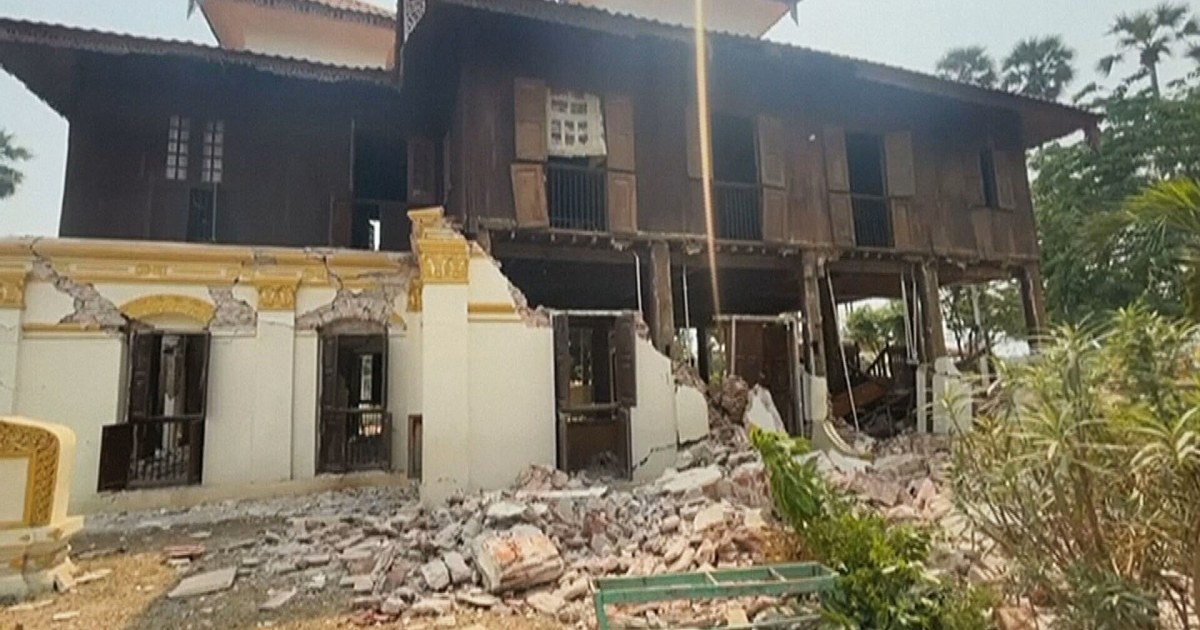Myanmar Shaken: Understanding the Impact of a 7.7 Magnitude Earthquake
A powerful 7.7 magnitude earthquake has struck Myanmar, leaving communities in shock and raising concerns over potential aftershocks. This seismic event not only tests the resilience of the affected regions but also highlights the urgent need for disaster preparedness in vulnerable areas. The tremors were felt across several regions, prompting immediate responses from local authorities and humanitarian organizations alike.
The Immediate Aftermath of the Earthquake
On the day of the earthquake, residents experienced a sudden and violent shaking that lasted for several seconds. Reports indicate that the epicenter was located near the remote northern region of Myanmar, an area that is not only rich in natural beauty but also home to various ethnic communities. The immediate consequences were devastating:
- Infrastructure Damage: Many buildings, including homes, schools, and hospitals, suffered significant damage. In urban areas, older structures were particularly vulnerable, leading to collapses and injuries.
- Casualties: As of the latest reports, dozens of individuals have been confirmed dead, and many more are injured. Rescue operations are ongoing, and the numbers may rise as search teams reach remote areas.
- Displacement: Thousands have been displaced, seeking shelter with relatives or in temporary camps set up by local authorities. The fear of aftershocks has exacerbated the situation, leaving many in a state of anxiety.
Community Resilience and Response Efforts
The resilience of the Myanmar people is being tested as communities come together to support each other in this crisis. Local organizations, along with international NGOs, have mobilized quickly to provide aid. Efforts include:
- Emergency Relief: Food, water, and medical supplies are being distributed to those in need. Volunteers have stepped up, providing shelter and basic necessities to displaced families.
- Psychological Support: The psychological impact of such disasters can be profound. Counseling and support services are being offered to help individuals cope with trauma and grief.
- Rebuilding Initiatives: Even in the early stages of recovery, discussions about rebuilding safer and more resilient infrastructure are underway. This includes considering earthquake-resistant building designs.
The Importance of Disaster Preparedness
This earthquake serves as a stark reminder of the need for comprehensive disaster preparedness plans in Myanmar. Historically, the country has faced various natural disasters, from cyclones to floods. However, seismic events like this one require tailored approaches. Key components of disaster preparedness include:
- Education and Training: Communities should be educated about earthquake risks and trained in emergency response. This can include regular drills and workshops.
- Infrastructure Assessment: Continuous evaluation of buildings, especially in high-risk areas, can help identify vulnerabilities and prioritize retrofitting efforts.
- Emergency Response Plans: Governments and local authorities must develop and regularly update emergency response strategies that include clear communication channels and evacuation routes.
Looking Ahead: Environmental and Economic Implications
The environmental and economic implications of a 7.7 magnitude earthquake can be profound. In the immediate aftermath, the focus is primarily on rescue and recovery. However, as time progresses, other issues will emerge:
Environmental Considerations
Earthquakes can trigger landslides, especially in mountainous terrain. As Myanmar is home to diverse ecosystems, the potential for environmental degradation is significant. Efforts must be made to monitor these areas and mitigate further damage.
Economic Impact
The economic repercussions of the earthquake may be felt for years. Key sectors such as agriculture, tourism, and manufacturing could suffer setbacks. The destruction of infrastructure can disrupt supply chains and lead to increased costs for rebuilding. However, investment in disaster-resilient infrastructure could also spur economic growth in the long run.
International Support and Solidarity
In times of crisis, international solidarity plays a crucial role. Several countries and organizations have offered assistance to Myanmar, whether through financial aid, supplies, or technical expertise. This global support demonstrates the interconnectedness of our world and the shared responsibility we have in addressing humanitarian crises.
As Myanmar faces the challenges posed by this earthquake, the response from the international community can help bolster recovery efforts and ensure that the affected regions can rebuild stronger than before.
Conclusion: A Call for Resilience and Preparedness
The 7.7 magnitude earthquake that struck Myanmar has undoubtedly shaken the nation to its core. While the immediate loss is devastating, it also presents an opportunity for reflection and growth. As communities rally together in the face of adversity, the importance of resilience and preparedness becomes increasingly clear.
Moving forward, a multi-faceted approach that combines local knowledge, international support, and proactive planning will be essential. By investing in disaster preparedness and resilient infrastructure, Myanmar can not only recover from this disaster but also emerge stronger, ready to face future challenges. Together, we can turn this tragedy into a catalyst for positive change, ensuring a safer future for all.
See more Update My News



